Tastemade rivals BuzzFeed for mobile food video views
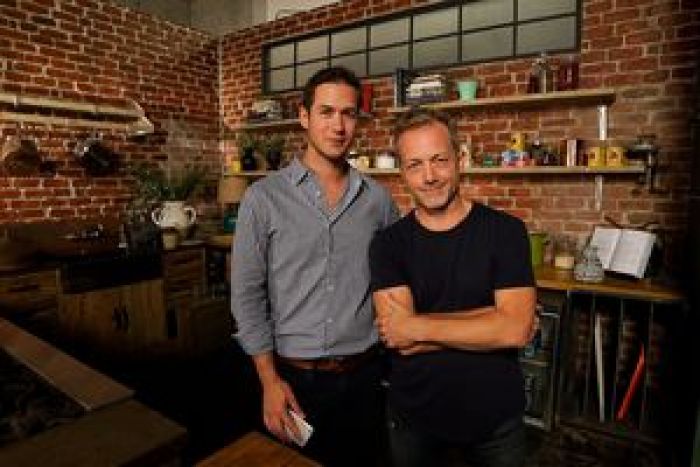
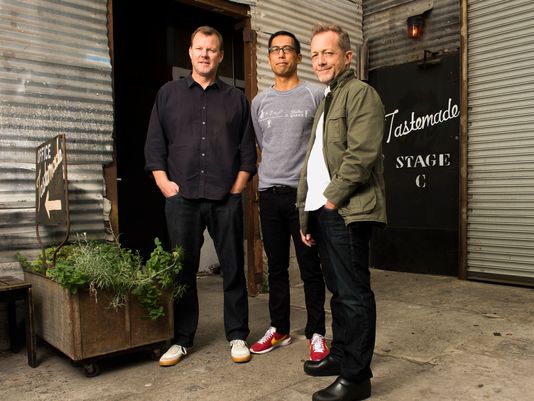
Tastemade co-founders: Larry Fitzgibbon, Steven Kydd and Joe Perez. Portrait outside of the company's studios in Santa Monica, Calif.(Photo: Robert Hanashiro, USAT)
SANTA MONICA, Calif. — The three partners who dreamed up Tastemade cooked up one winning meal for Millennials — food shows for mobile viewing.
“There’s a whole new generation of young people,” who were just as interested in food as their parents when they watched it on TV, says Joe Perez. He founded Tastemade in 2012 with partners Steven Kydd and Larry Fitzgibbon. “They wanted to see it with people of their age, as opposed to having older stars doing it.”
What the Food Network is for cable, Tastemade is trying to be for the mobile-friendly social networks and streaming services — Facebook, Snapchat, YouTube, Spotify and Apple TV, among others. The venture-backed start-up sells advertising and sponsorships for videos its team of 70 makes in a former TV production studio here.
Tastemade videos average 1.5 billion views monthly, with 100 million monthly active viewers. It competes with the more heavily financed BuzzFeed, whose Tasty channel on Facebook and YouTube averages 2 billion videos monthly, according to market research firm Tubular.
Tastemade's video views are far more than some food shows manage to garner both on and off cable networks.
The Food Network, owned by one of Tastemade’s investors, Scripps Networks, is one of several food properties also rushing to create content for social networks. It averages just under 500,000 daily viewers on TV. Food's most popular video on YouTube, a clip from the Chopped Junior TV show, received 300,000 views; Tastemade's most viewed video on YouTube, about a killer chocolate milkshake, has some 2.5 billion total views.
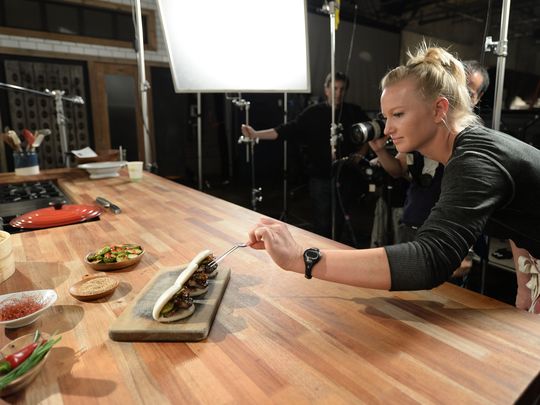
Food stylist Hayley Christopher and camera operator Peter Lau (background) work on a video shoot in the Tastemade studios in Santa Monica, Calif. (Photo: Robert Hanashiro, USAT)
Tastemade “has managed to do something fairly unique and rare in today’s world,” says Nick Bell, vice-president of content for Snapchat, “which is create a digital brand with a really strong voice. Too many digital publications are about driving the audience with click bait. Tastemade’s approach is very fresh.”
All three founders of Tastemade met at Demand Media, the once high-flying company best known for creating content that fed search engine queries on Google. Demand Media saw its stock price dramatically fall, and major executive changes took place when Google changed its algorithm and Demand content got dramatically downgraded. The company, once valued at $2 billion, has lost 95% of its value, according to Bloomberg[1].
The risk for Tastemade is having partners pull a Google and watch their monthly views plummet.
But this time around, Tastemade has more than one outlet, notes investor Geoff Yang, a partner with Redpoint, one of Tastemade's investors. From the Demand experience, the founders learned to diversify.
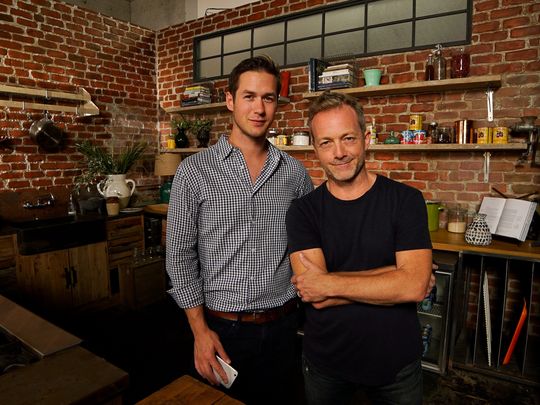
Snapchat's Nick Bell with Tastemade's Steven Kydd at Tastemade's studios in Santa Monica. (Photo: Jefferson Graham)
For Tastemade, job one has to be to continue creating good content, notes Rich Greenfield, an analyst with BTIG.
“The only reason Facebook or Snapchat cares about them is because they’re making great content," he says. "If they fail that, they’ll be in trouble.”
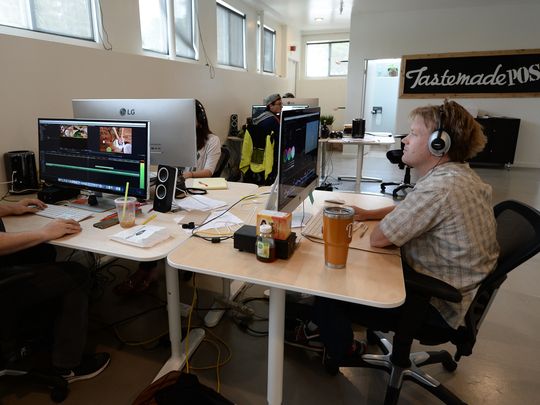
The video editing room at Tastemade studios in Santa Monica, Calif. where Tastemade produces food and travel content for internet and social media sites like Apple TV, Snapchat, FaceBook and Instagram. (Photo: Robert Hanashiro, USAT)
Tastemade has yet to start turning a profit, but the company brings in revenue, with big advertisers such as General Mills, Stella Artois beer, Grey Goose vodka and Hyundai. Profits will come as the company gets bigger, Kydd notes. Tastemade declined to offer revenue details, saying it is a private company.
CROWDED TABLE
The partners founded the company after a dinner talking about their love of food, and went from there, starting with videos that were at first primarily shown on YouTube. From there, they expanded to travel and lifestyle, using young folks as hosts who had built social followings.
“We saw that the world was more social than it had ever been before,” Perez says. With travel, “video can take you to a place, so much more emotional than just a photo.”
Tastemade has raised $80 million since its founding in 2012. Other investors include Redpoint, Comcast Ventures and Liberty Media, the John Malone-controlled company that has many cable TV investments in channels such as Discovery, QVC and Starz.
Peter Csathy, CEO of Manatt Digital Media, which advises and invests in tech startups, puts Tastemade in the category of mobile production firms such as Maker Studios, bought by Disney for $500 million in 2014, and Fullscreen, acquired by Disney AT&T and the Chernin Group for a reported $200 million to $300 million that year.
It’s “inevitable” that Tastemade will be bought and acquired, he says. “They will be another digital first success story.”
The top candidates include the investors — Comcast, Liberty and Scripps — Csathy said. Kydd had no comment, nor have the three investors.
Besides Tastemade and Tasty, the online food video space includes Pop Sugar and legacy magazines such as Epicurious and Bon Appetit.
BUFFY'S STUDIO
The Tastemade mobile factory here is a lab for food and travel porn-delectable dishes that make your mouth water and take you to faraway places for your Millennial bucket list.
Content is created in a cavernous old studio that was once home to TV series such as Buffy, the Vampire Slayer.
As producers churn out food recipe and tasting videos in a studio, , editors work in another room making different versions — in square format for Facebook and Instagram, vertical for Snapchat and full-frame 4K for Apple TV and YouTube.
Kydd says this type of approach — carving up content for multiple partners, “is a different type of storytelling, but a unique opportunity. If you focus on the consumer, and how they’re using your product, that leads you to a very different place.”
Fidji Simo, Director of Product for Facebook, says Tastemade has succeeded because it understands how to create for social media.
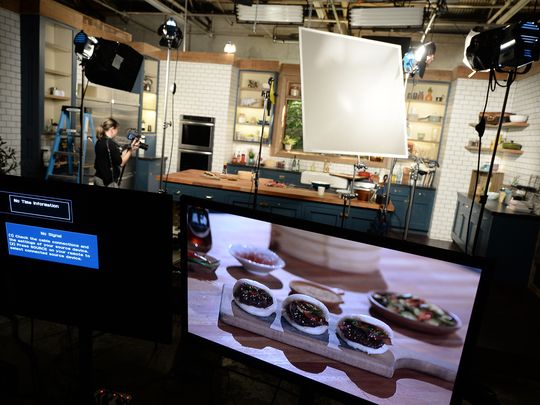
Director of photography Sharra Romany works on a video shoot in the Tastemade studios in Santa Monica, Calif. (Photo: Robert Hanashiro, USAT)
Tastemade’s videos “are perfectly designed to pop in News Feed,” she says. “In addition to using compelling food imagery, Tastemade's videos work well with auto-play by grabbing the viewer’s attention from the beginning and overlaying text so that the videos are interesting even without sound.”
The company was chosen by Facebook to showcase its new Facebook Live mobile video feature by producing 100 live shows monthly. The company got a leg up by purchasing a cafe near their studio, which serves as a live lab.
Tastemade and the Food Network are featured Snapchat’s Discover platform, where media companies showcase short-form video content for millennials, alongside others like Mashable, Comedy Central and CNN.
While both entice with mouth-watering recipe videos, Tastemade is more personality driven.
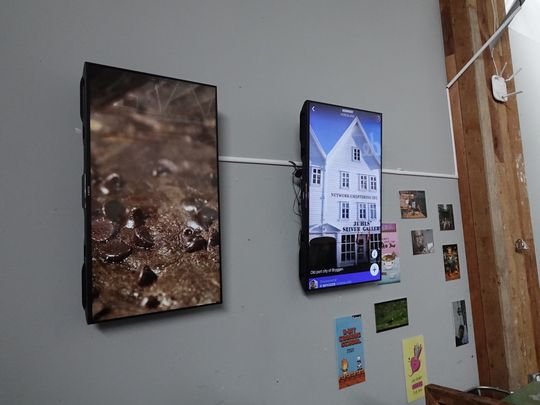
Vertical monitors on the wall of Tastemade's Santa Monica headquarters show clips the way Snapchat viewers see them. (Photo: Jefferson Graham)
What’s next for Tastemade?
Go public? Get swallowed up by an Apple or Google?
“I don’t know,” Yang says. “Too early to tell. But this category is going to get really big. You’re going to see a lot of next generation media companies.”

A vertical kitchen was built at Tastemade Studios in Santa Monica to produce video in the landscape format for Snapchat (Photo: Jefferson Graham)
Follow USA TODAY tech columnist and #TalkingTech host Jefferson Graham on Twitter, @jeffersongraham.[2]
Read or Share this story: http://usat.ly/1VkLO2t
References
- ^ according to Bloomberg (www.bloomberg.com)
- ^ @jeffersongraham. (twitter.com)









